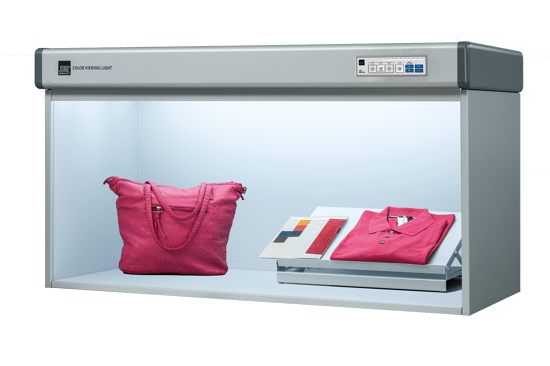The Importance of Cotton Fabric Sourcing and Preparation for Digital Textile Printing
-COTTON-FOR-DIGITAL-TEXTILE-PRINTING.jpg?width=750)
Why does fabric sourcing and preparation play such a vital role in digital textile printing? To the untrained eye, two fabric specifications may well read as identical, physically they look the same and may feel the same, but their manufacture and preparation will not be identical.
Many, may well make a choice using cost as the purchase parameter, but that would not be the wisest move - unless you can be certain of origin and compatability for digital textile printing.The supply chain for all fabrics, whether to be digitally printed or not, must be researched carefully. Variances in origin, crop, even continent, and the finishing processes that they are subjected to, from fibre to fabric can play havoc with digital textile production.
Cotton is currently mainly digitally printed with two different print processes: Pigment and Reactive inks. Both of these processes share one important feature in common, and that is the requirement for pre-coating prior to digital printing.
However, before we look at coatings, we have to travel upstream into the supply chain, as the manufacturing route of fabrics also has critical importance:
Mercerisation, is where the fabric, after bleaching, has been exposed to a concentrated solution of Caustic Soda (NaOH) to improve properties such as fibre strength, shrinkage resistance, lustre, and dye affinity, and is widely used. In this process, the caustic solution actually re-arranges the cellulose molecules in the fibre to produce structural changes which improve dye uptake and tear strength, to help reduce fabric shrinkage, and to impart a soft lustre.
-CIBITEX-EASY-COAT-AND-DRY.jpeg?lang=en-GB) Image Credit: CIBITEX.
Image Credit: CIBITEX.
The result of the mercerisation process is a fabric with a soft handle, consistent whiteness and resistance to shrinkage. Yet the process is expensive - as manufacturers seek ever cheaper sources, and as pigment printing has gained ground, bleaching standards prior to printing for digital textile printing of cotton were relaxed. Bleaching being specified without any important common standards such as consistency of whiteness and total size removal.
The result of this chase to cheapness is that fabric preparation variations have proved to become a matter of serious concern to the digital textile printer. Where economies were sought in the use of expensive chemicals, such as Hydrogen Peroxide or Sodium Hypochlorite in the continuous bleaching process, the resultant fabrics produced often have variations in whiteness and handle which impact upon the repeatability and attractiveness of the final product.
In attempting to square the circle of whiteness, fabric manufacturers have become increasingly reliant on Optical Brightening Agents (OBA’s) to make up for the deficiencies in their bleaching processes. This introduces another unwelcome variable, because OBA’s have different colorific reflection values and shades, with the result, that the digital textile printer could not guarantee fabric reproduction from one fabric supplier to another – even batches from the same supplier will vary.
This was further compounded as digital pigment printing began to grow in volume, because fabrics have to be pre-coated to increase the colour gamut and durability of the print.
Beyond the bleaching conundrum - the next stage in fabric preparation is the provision of pre-coating. Pre-coating formulations prevent ‘wicking’ which is defined as the random spread or migration of colour after printing. Pre-coating is essential to enable a sharp print mark or register on the surface of the fabric. A wide variety of coating chemicals are now available, which along with different methods of application, from spray to foulard systems, create yet another problem area, particularly with regard to handle and variability in colour reflectivity.
In the early days of digital textile printing, which was largely using reactive inks, many fabrics had extensive pre-treatment to enable the colour gamut of the inks to be as wide as possible. Yet the reactive process had important drawbacks when it came to cost and sustainability. With a complicated process which took a lot longer, the heavy use of energy and water are wasteful, and gradually the industry has turned towards Pigment printing as a eco-friendly solution.
-DIGITALLY-PRINTED-COTTON.jpg?lang=en-GB)
Pigment printing provides a simple process involving printing and thermo-fixation by either a heat press or a fabric baker. However, with pigment printing, pre-coating is also an essential in terms of enhancing the colour gamut and fastness of the fabric.
So faced with the inevitability of pre-coating, volume digital textile printers are faced with two important choices, first the choice of chemicals and second the choice of machinery to pre-coat their fabrics. As far as chemicals are concerned the printer has a wide array of product available. In many cases coating formulations are supplied by Ink manufacturers to pair up with use of their inks.
In this field, major manufacturers include, Epson Genesta Inks Pre-Gen, Neo Coat from Swiss Performance Chemicals and the P601 Pre-Coat from Pigmentinc. However, many chemical companies independently supply excellent pre-coating chemicals, these companies include Lubrizol of the USA, Tanatex of the Netherlands, Rudolf Chemicals of Germany and Sarex of India.
In general terms, these pre-coating formulations, which often use thickeners and cross linking agents, improve the mark and colour intensity of the print, as well as the wash, and rub fastness of the fabric.
Beyond the choice of fabrics and chemicals the volume digital printer then has a wide choice of machinery and process routes available to pre-coat their fabrics prior to print. In simplest terms, the use of a foulard (padding mangle) followed by a stenter is widely used, where the process is either dipped or back coated continuously at speed. Various attachments are now available to improve this process, where non contact or minimum chemical application is used to improve handle over the simple ‘dip’ method of pre-coating.
Leading the way here are the Magnorol from Zimmer of Austria, the TexCoat™ from Baldwin Technologies of the USA and the easyCOAT-DRY from Cibitex of Italy, all of which make effective additions to any Digital textile pre-coating line.
As technology has advanced we now have a number of hybrid solutions, where in-line machines, which work in tandem with the digital textile printing machinery, giving a one-step process.
In the one-step sector the leading lights are Kornit from Israel, Swiftjet of the UK, Mimaki of Japan, and Setema of the Netherlands, all of whom provide one-step solutions for digital textile printing where the pre-coating process is in-line with the printer giving economies of speed and labour cost.
Although the pre-coating sector is an extensive and technically competent arena, a correct and informed choice of machine, process and chemicals, will give the digital textile printer substantial savings of cost, time and labour.
So beyond machinery, and learning a new skill set as a textile technician, how does the digital textile printer deal with this fabric minefield?
The simple answer is to find a reputable fabric supplier, and stick with their product to ensure continuity of fabric quality. This should be backed up with a sensible, but simple in-house fabric testing facility and colour management. Before printing, incoming batches of fabric should be checked for whiteness and thread density using simple instruments available from textile testing suppliers such as James Heal or SDL Atlas (UK).
There are a number of ways to apply colour management technology for consistent digital printing, saving the digital textile printer many hours of sampling and waste. Care must be taken to ensure that colour continuity if achieved between batches. After sample printing, fabric should be checked against approved standard samples using a colour matching cabinet, fabric can also be checked for drape using a crease recovery device – all of these factors must be met to meet client specifications.
The digital textile printer has to create a robust internal testing process and enforce production standards alongside colour management. These actions will deliver a critical measure of certainty and ensure that the printed fabric supplied meets everybody’s expectations.
Discover the latest in digital textile printing at the Global Print Expo 2021, Europe's leading exhibition for screen and digital wide format print, textile printing and signage. Discover the latest products, network with like-minded individuals and explore new business opportunites. Register your interest here.
Topics
Interested in joining our community?
Enquire today about joining your local FESPA Association or FESPA Direct
Recent news

The pros and cons of Digital Signage and Printed Signage
Sonja Angerer discusses the pros and cons of both digital signage and printed signage. Current developments such as artificial intelligence and spatial computing are changing the situation once again. How will this shift affect printers?

How to create an efficient smart factory
Debbie McKeegan speaks to industry specialists at Personalise Make Wear in Amsterdam about smart factories and customisation technology. Debbie speaks to Antigro, Caldera, Print Logistic, Inkcups and Kornit Digitial.

Standard lighting conditions for wide format printers and their many markets
Paul Sherfield shares the various standard conditions that are required for wide format printers as colours can appear differently dependent on the differing types of lighting and environments.
_compromised.jpg?width=550)